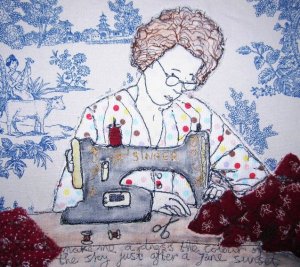There has been discussion about what a poet is and whether one can confer the title on oneself. I was tentative for a long time about calling myself a poet. Many say a poet is someone who writes poems. But what makes something a poem? When I was a very young poet (13 or 14), I used to show my work to people and ask’ is this a poem?’ by which I meant ‘does it do what poems are meant to do, is it magic?’That is why I don’t believe in bad poems, if it’s bad, it’s not a poem. William Carlos Williams said ‘if it ain’t a pleasure, it ain’t a poem’.
By calling oneself a poet, if one simply means that one writes poems, I don’t have an issue with that. But the secondary definition is that a poet is a ‘person with great imagination and creativity’. I don’t feel I could say that about myself unless other people said it about me first.
Matt Simpson always said poet was a ‘praise’ word. There is a tradition behind this assertion. So I used to call myself a writer of poems, or just a writer – which is true enough because I do write other things, such as critique books for Greenwich Exchange, chapters of books aimed at undergraduates, GCSE textbooks. But these are by products of my teaching career. I have written poems since I was very young, but when I read Robert Graves’ The White Goddess’ at 15, I decided to dedicate myself to poetry. I read Auden’s essay ‘The Dyer’s Hand’ too, and from these texts gleaned that I needed to immerse myself in poetry and learn from the masters. I tried every form in Frances Stillman’s Poetry Manual. A poet needs to have the knowledge, to read, to learn from the best, and to keep on doing so.
I was almost 19 when I first met Matt Simpson. We gradually moved from mentor/ mentee roles into friends who commented on each other’s poems, a shift which evolved over a long period. I dedicated my first collection, Dandelions for Mother’s Day (Stride 1988) to him in recognition of my debt to him.
In 2009, he had a heart bypass operation. He was fully aware that he might not pull through and horrified me by describing it as ‘an awfully big adventure’. He had the operation on the Monday and it was a relief that it appeared to have gone well. I went to visit him in hospital on a beautiful June day. He hadn’t wanted me to go and see him in intensive care but I was so glad I did. It was to be the last time I ever saw him. This poem was written a few days later, after his death:
Hospital Visiting
I trace your steps
from hospital car park
in warm evening sun
impatient to see you.
A machine helps me find
a path to you through grey
shiny corridors, up stairs
and over bridges, through
protocols and passwords,
hand gels to sanctify me,
like holy water in church,
before I can touch you.
I have to ask where you are.
The medics have claimed you
though I’m allowed
to squiggle on to a high stool.
We think this is all temporary,
that soon we’ll have you home,
a new man. We’ve plans for you.
You say it’s kind of me to come.
As if I could stay away. You know
I love you. You introduce me
to your favourite nurse, the one
with the film star eyes. Tell her
‘This is my friend Ange, a poet too.’
Not a title to be claimed for oneself,
but you gave it freely, a last bequest
in your final days of life. *
Whether one subscribes to the notion of poet as a title conferred, as Matt did, or sees it purely as meaning someone who writes poems, what Matt said to me on that visit was a great gift, and I know he did it deliberately.
I read it as giving me that long-withheld title, out of love and respect, of passing the baton to me, of telling me to go forward with my poetry despite him not being there to critique and encourage me, as he always had done, his way of saying I was a fully-fledged poet, which indeed he had said in a review but not to my face.
And it is why I now feel able to call myself a poet.
*This poem first appeared in my Salt Modern Voices pamphlet I Sing of Bricks and was united with the remaining poems from the 17 poem elegiac sequence I wrote for Matt, from my Rack Press pamphlet Catching On in my collection Paper Patterns (Lapwing 2012)



